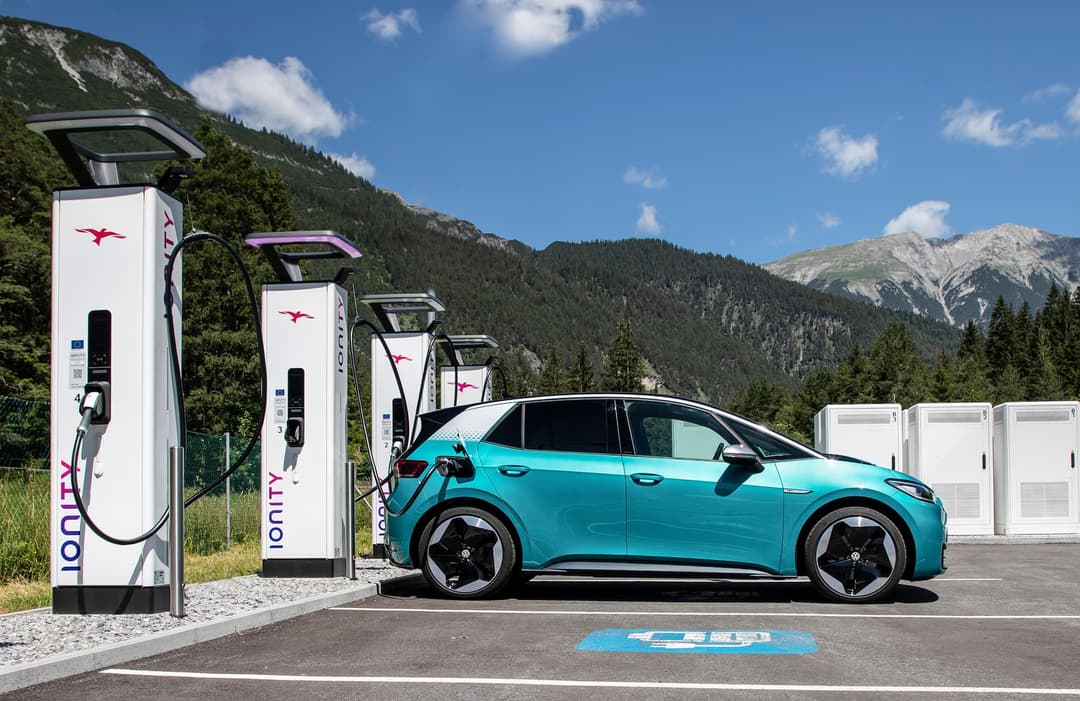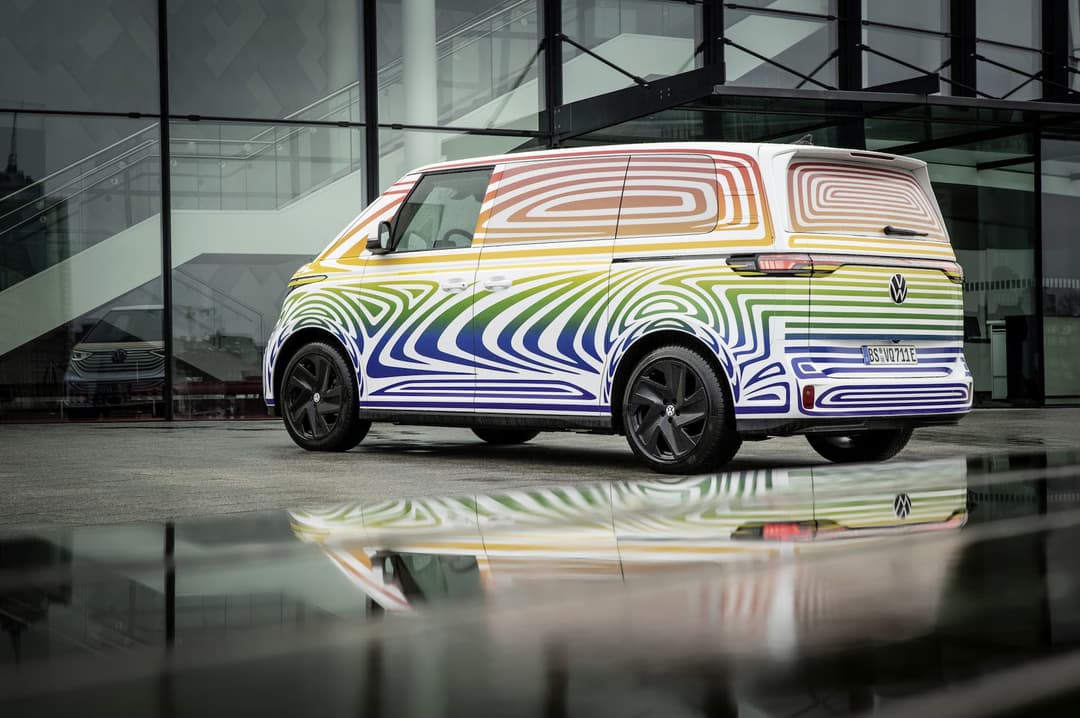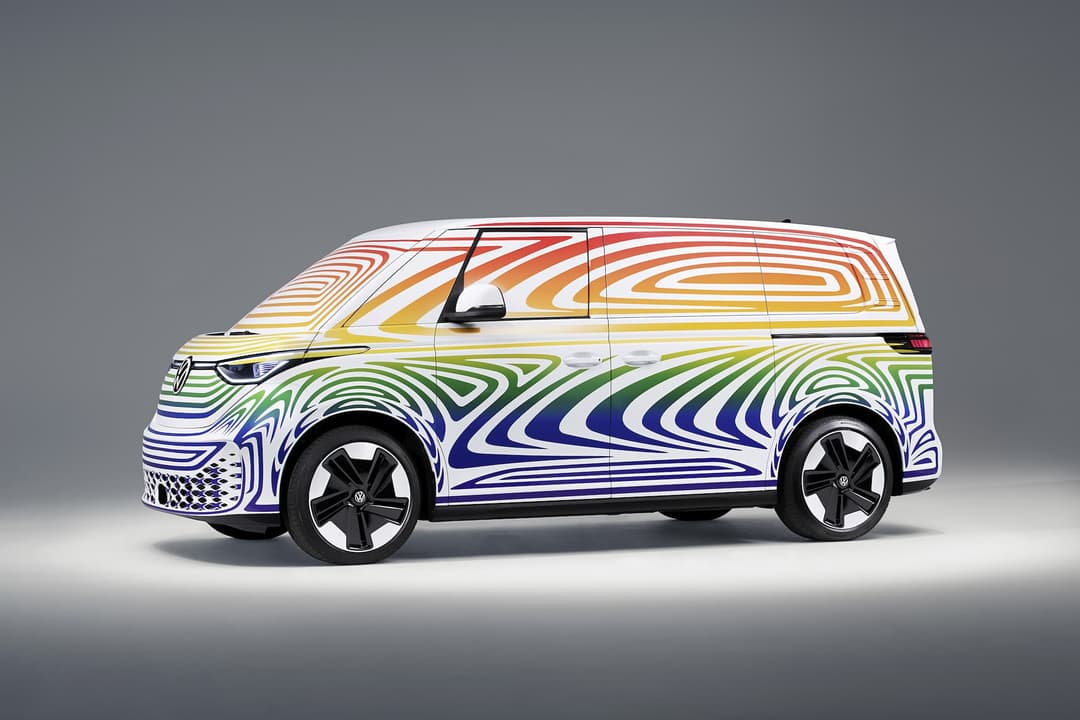After 50 years of teasing concepts, the reincarnation of the iconic Volkswagen Kombi van from the 1950s is coming back in all-electric form in 2022.
Whereas the current diesel-powered ‘T6.1’ generation Volkswagen Multivan and Transporter have carried on the lifestyle van in spirit, the Volkswagen ID.Buzz people carrier and ID.Buzz Cargo commercial van harps back to its roots with short overhangs, long wheelbase, and open glasshouse – thanks to riding on the firm’s dedicated Modular Electric Toolkit (MEB) platform.
Inspired mostly by the original ‘T1’ Microbus, key details of the rounded retro EV van have been revealed ahead of its March 9 debut.
But, Australians will likely wait a while to get their hands on the ID.Buzz’s.
Volkswagen Australia has been critical about our lagging federal government action on setting firm fleet carbon emissions reduction limits – which relegates the nation down the list for Volkswagen EV supply.
We’re expecting the Volkswagen ID.3 hatch and ID.4 SUV to arrive in late 2023 or 2024 – at least three-years after it launched in Europe – while other Volkswagen Group MEB-based cars will arrive first, including the Cupra Born hatch in late 2022 and Skoda Enyaq SUV due later this year or 2023.
Nevertheless, the ID.Buzz and ID.Buzz Cargo previews new EV features that’ll proliferate to future Volkswagen products and compete against the forthcoming Renault Kangoo E-Tech, Ford e-Transit, and Mercedes-Benz eVito and eVito Tourer pure-electric vans coming this year.

Volkswagen ID.3 pictured
‘Plug and Charge’
Previously a foreign concept on a non-Tesla EV, owners can now seamlessly plug in the cable, immediately start charging, and auto credit your account – without the need to fiddle with a mobile app or RFID tag to activate the session on the Volkswagen ID.Buzz's.
While full details are yet to be revealed, Volkswagen has confirmed ‘Plug and Charge’ will work with select DC fast charging networks in Europe, including Ionity, Aral pulse, bp pulse, EON, and more.
The former of which is co-owned by the Volkswagen Group as part of a joint venture with the BMW Group, Ford, Hyundai Motor Group, and Mercedes-Benz AG.
It’s likely based on Tritium’s Plug and Charge tech announced back in 2020. The Ionity network exclusively uses the DC charging stations from the Brisbane-based manufacturer founded by alumni from The University of Queensland.
Using the ISO 15118 standard, the vehicle will communicate and authenticate with the charger using a cryptographic key. This is linked to the owner’s account and card details for payment, which requires a one-time set up first.
In addition to the ID.Buzz and ID.Buzz Cargo, Plug and Charge capabilities will be enabled for all current Volkswagen ID. models via an over-the-air (OTA) software update this year.
They follow the Mercedes-Benz EQS and EQE sedans using the same Plug and Charge standard.
The plug and charge solution dates back to 2012 when then American startup Tesla launched its Supercharging network in the USA. Since then, no other public EV charging provider has matched Tesla’s seamless system of filling up like a combustion car and has become a unique selling point for the EV pioneer – until now.

Bidirectional charging
While retro-inspired ID.Buzz vans can charge its 77kWh (usable) battery at up to 135kW DC speeds, it’ll be the first Volkswagen’s to support vehicle-to-home (V2H) and vehicle-to-grid (V2G) bidirectional charging.
Since our cars spend 95 per cent of their time parked and the typical Australian drives around 34km per day, this represents an opportunity to utilise the large battery packs sitting underneath EVs to act as a battery storage system for households.
V2H allows the zero tailpipe ID.Buzz to volunteer its own battery juice to feed a home's electricity, which is a handy backup during blackouts or when there isn’t solar energy generated from the sun.
As for V2G, when there is excess energy (i.e. more electricity supplied from the EV than needed for a household), it can be exported to the wider electricity grid, which the electricity provider buys from the owner in the form of bill credits.
This can be especially lucrative when sold during high-demand on-peak periods during evenings.
The EV can then be recharged for the next day of driving during the cheapest electricity tariff or, when combined with a solar panel system, free generated excess energy from the sun can top the vehicle up.
V2H and V2G require a compatible AC charging wallbox installed and the bidirectional flow is automatically managed by the system.
Melbourne-based company JETCharge is currently delivering the first bidirectional charger in Australia, the Wallbox Quasar, with a price tag of around $10,000 (similar to a home battery) according to the ABC. That impost is expected to decrease over time.
Ultimately, bidirectional charging will save owner’s in EV running costs and sustain the electricity grid.
It’s unclear whether the ID.Buzz and ID.Buzz Cargo vans will also support vehicle-to-load (V2L) capabilities as on the Hyundai Ioniq 5 crossover and Ford F1-50 Lightning ute. That would suit campers and tradies alike in powering essentials using the EV as a portable power bank.

Long wheelbase
Thanks to the Volkswagen Group’s dedicated MEB electric vehicle platform, the ID.Buzz features a long 2988mm wheelbase, but short 4712mm overall length harping back to the original T1 Bulli’s concept.
For reference, the combustion-driven Volkswagen T6.1 vans have a similar wheelbase (2990mm), but stretches 192mm longer (4904mm).
The German automaker claims the ID.Buzz’s offer extremely short body overhangs, large flat-floor interior space – with up to 1121-litres of luggage volume in the ID.Buzz and 3.9 cubic metres of cargo volume in the ID.Buzz Cargo – but the flexibility to fit into smaller parking spaces.
Being rear-wheel drive only, the turning circle is just over 11 metres – similar to a Volkswagen Golf small car.
A new ‘Trained Parking’ function will take advantage of this by memorising how to manoeuvre in and out of parking spaces automatically.
A longer wheelbase version and flagship California model are said to be coming in the future.
Volkswagen ID.Buzz and ID.Buzz Cargo preliminary specifications:
- Wheelbase: 2988mm
- Power: 150kW
- Torque: 310Nm
- Battery: 82kWh (77kWh usable)
- Charging: 135kW DC
About the author
Stay up to date with the latest EV news
- Get the latest news and update
- New EV model releases
- Get money savings-deal





